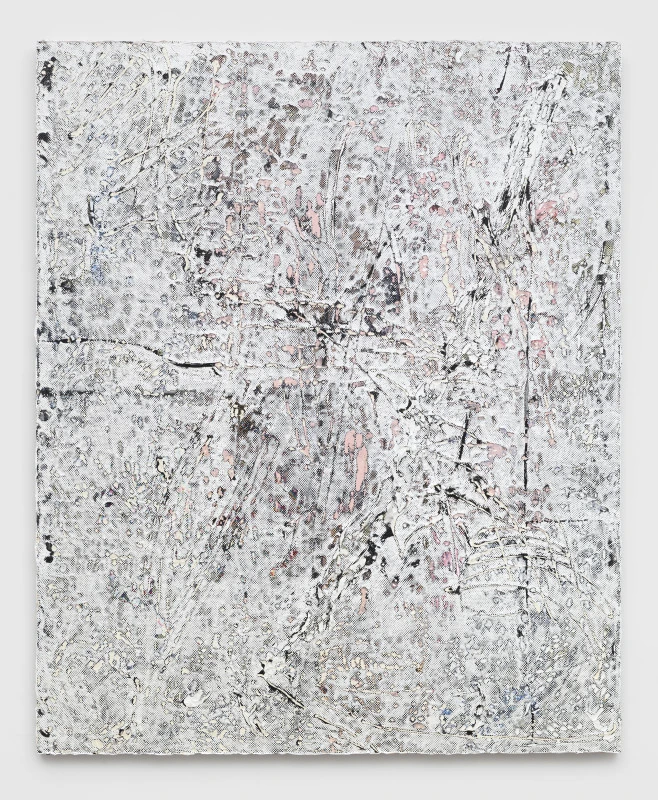Garth Weiser
4 Mar-9 Apr 2022


Simon Lee Gallery is pleased to announce an exhibition of new paintings by Garth Weiser, the artist’s fourth presentation with the gallery.
Garth Weiser’s practice has been dominated predominately by abstract imagery but in recent works Weiser fuses abstraction and figuration. Weiser layers gestural impastoed paint, ordered geometry, and disembodied figurative forms. Using a variety of devices such as tape, exacto blades and shipping nets he disrupts, interrupts and cuts into the various layers partially revealing the printed imagery underneath. The resulting painting surfaces feel scarred and sculptural. He creates a surface that is at once controlled and free with images flickering in and out of recognition. By employing this method of addition and subtraction, Weiser’s works underline his fascination with the evolution of painting.
In this new body of work, Weiser intuitively selects images from various digital platforms, as well as the art historical canon, including Philip Guston’s Poor Richard series and the mosaic tropes of Byzantine portraits. Weiser juxtaposes these ideas with Z-Brush renderings of monsters, further integrating them into the static of the overall canvas. As Weiser builds each painting the legibility of the initial imagery recedes and advances simultaneously, recalling philosopher Ludwig Wittgenstein’s concept of ‘aspect perception’, whereby a single image can be perceived in two ways – each representing a distinct form. In this instance, the viewer’s perception alternates between the abstract and figurative. Multiple perspectives and after-images emerge and recede with tributaries feeding and looping back into one another. Cut and manipulated surfaces absorb light and reflect it unevenly, maintaining the viewer’s mobility via optical instability and a lack of figure-ground distinction. The biomorphic and alien forms combined with the vascular surfaces of these works trigger chromatic vibrations and optical illusions, further complicating our ability to distinguish between real and digitally simulated imagery.
Drawing inspiration from Byzantine and medieval paintings, there appears to be a striking parallel between Weiser’s looming figures and demonic illustrations of the Middle Ages. A sense of impending doom that is present at all times is conveyed in these images of the monstrous and the grotesque. In these new works, Weiser channels the feeling of anxiety and fear that permeates the collective subconscious of our haunted culture.